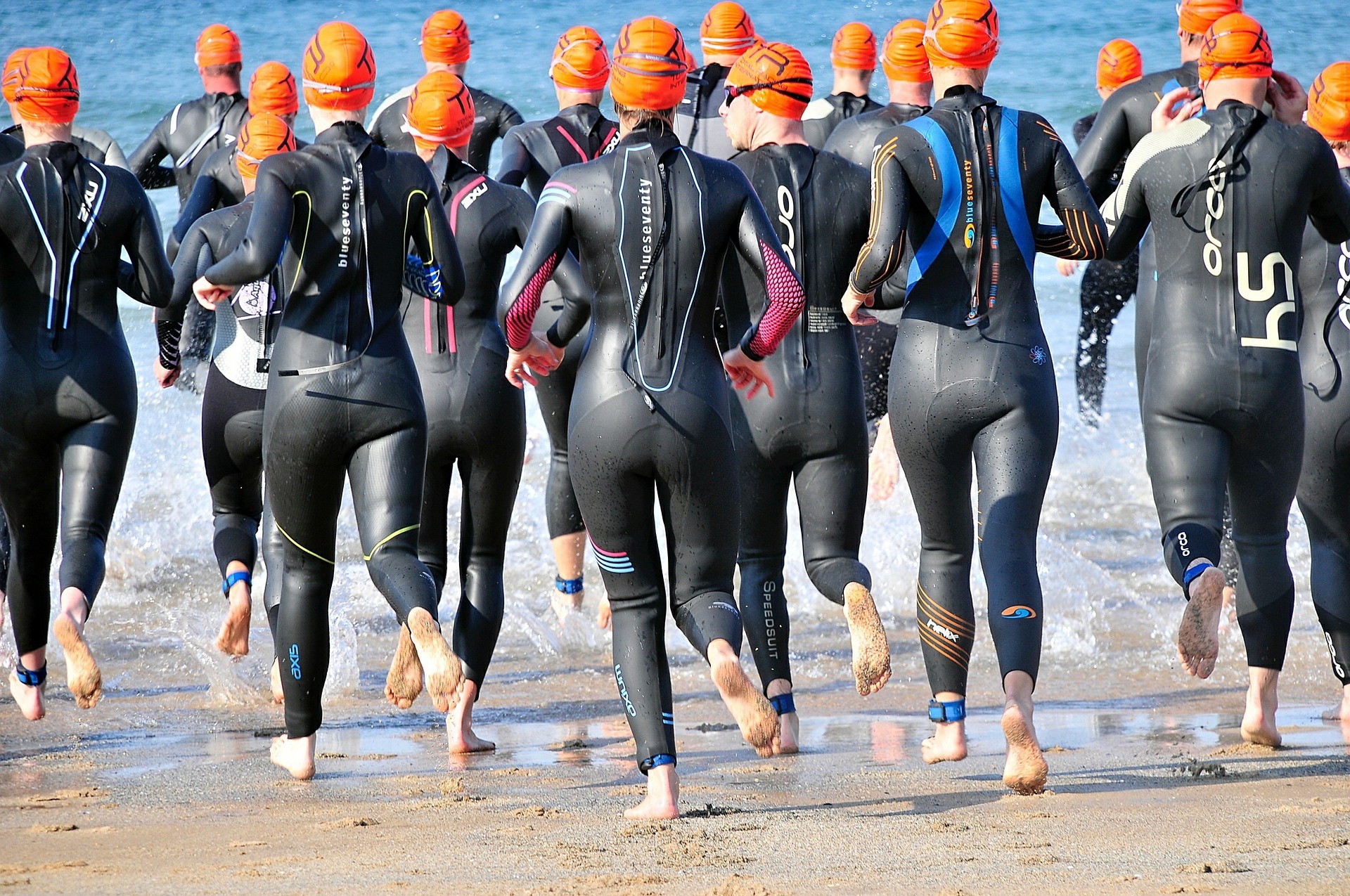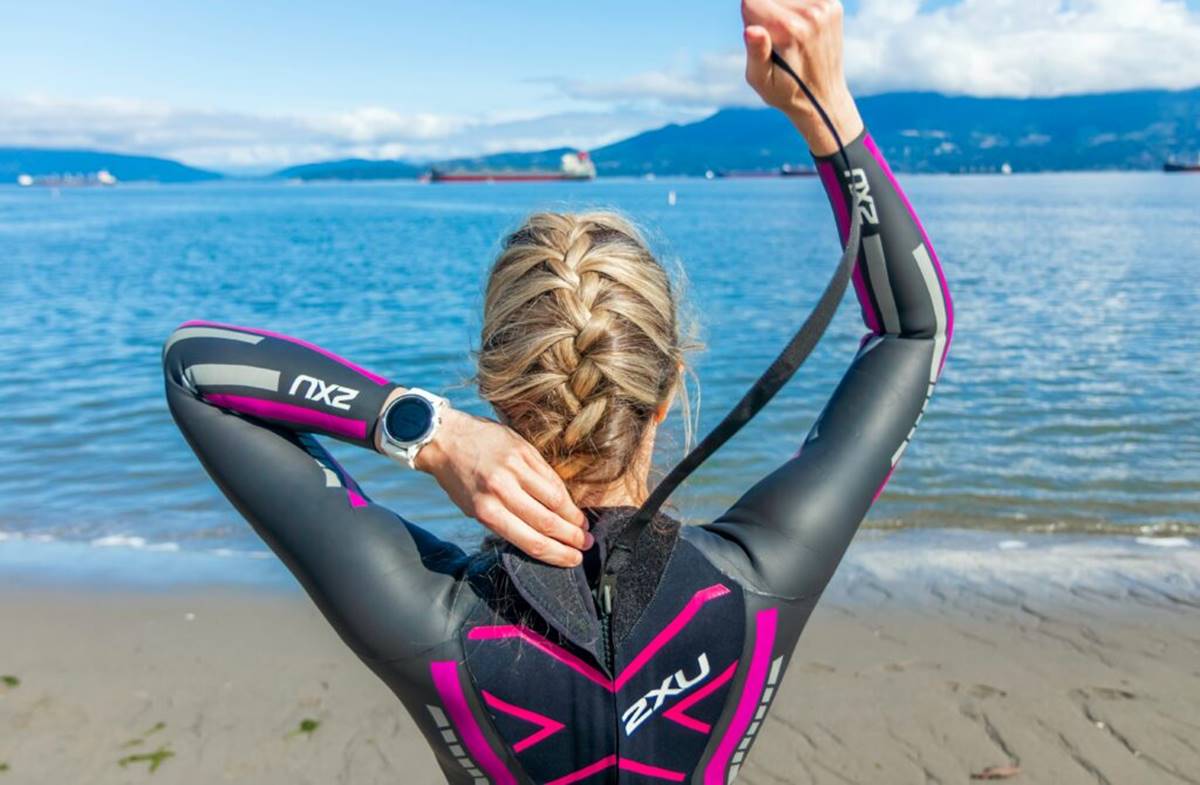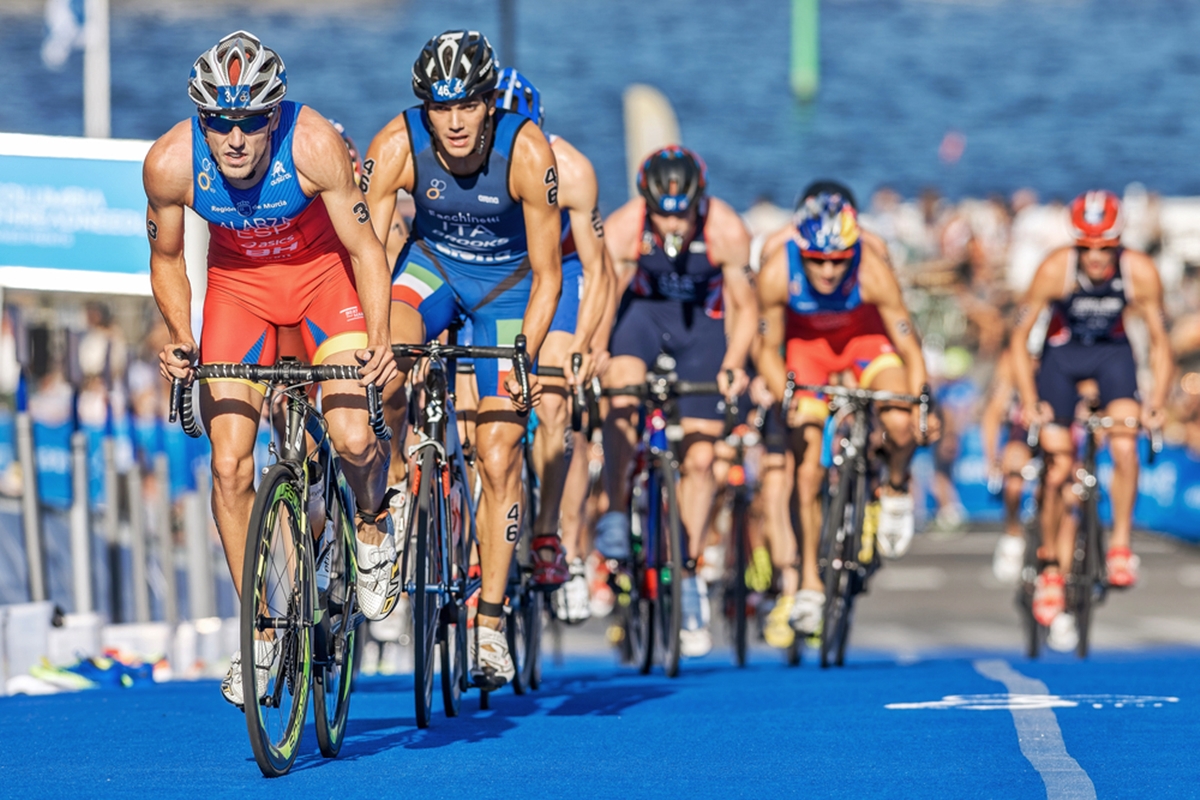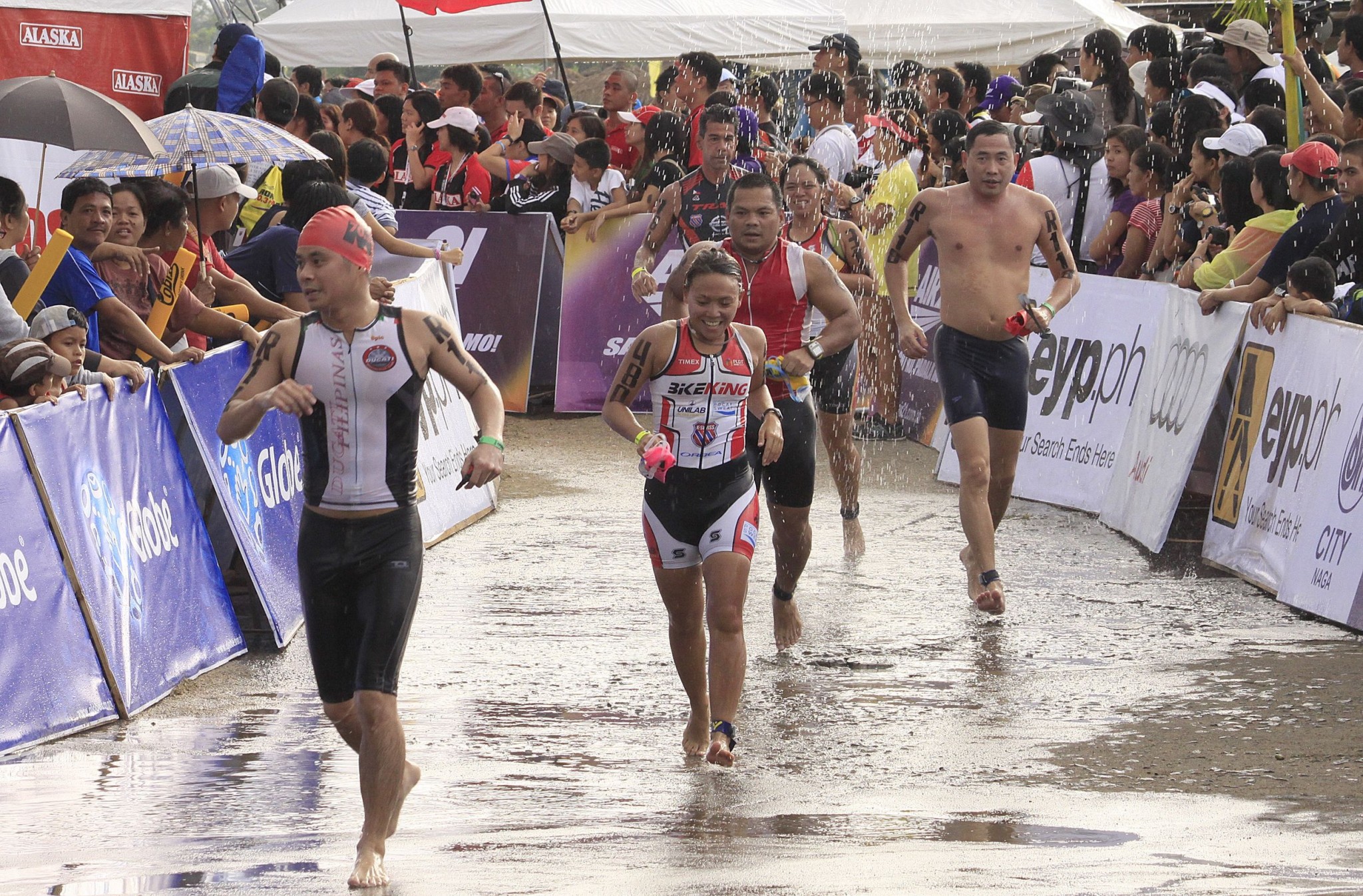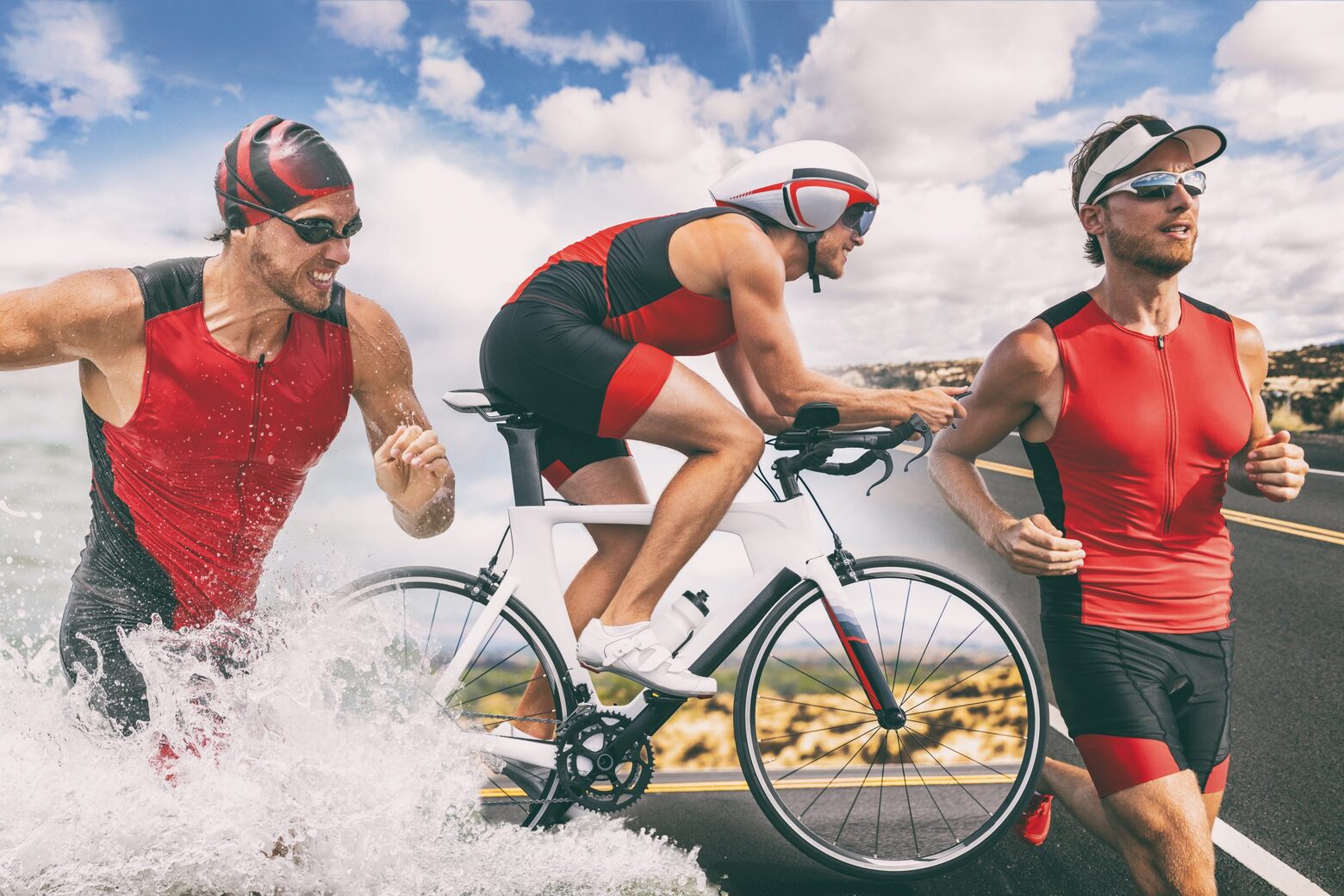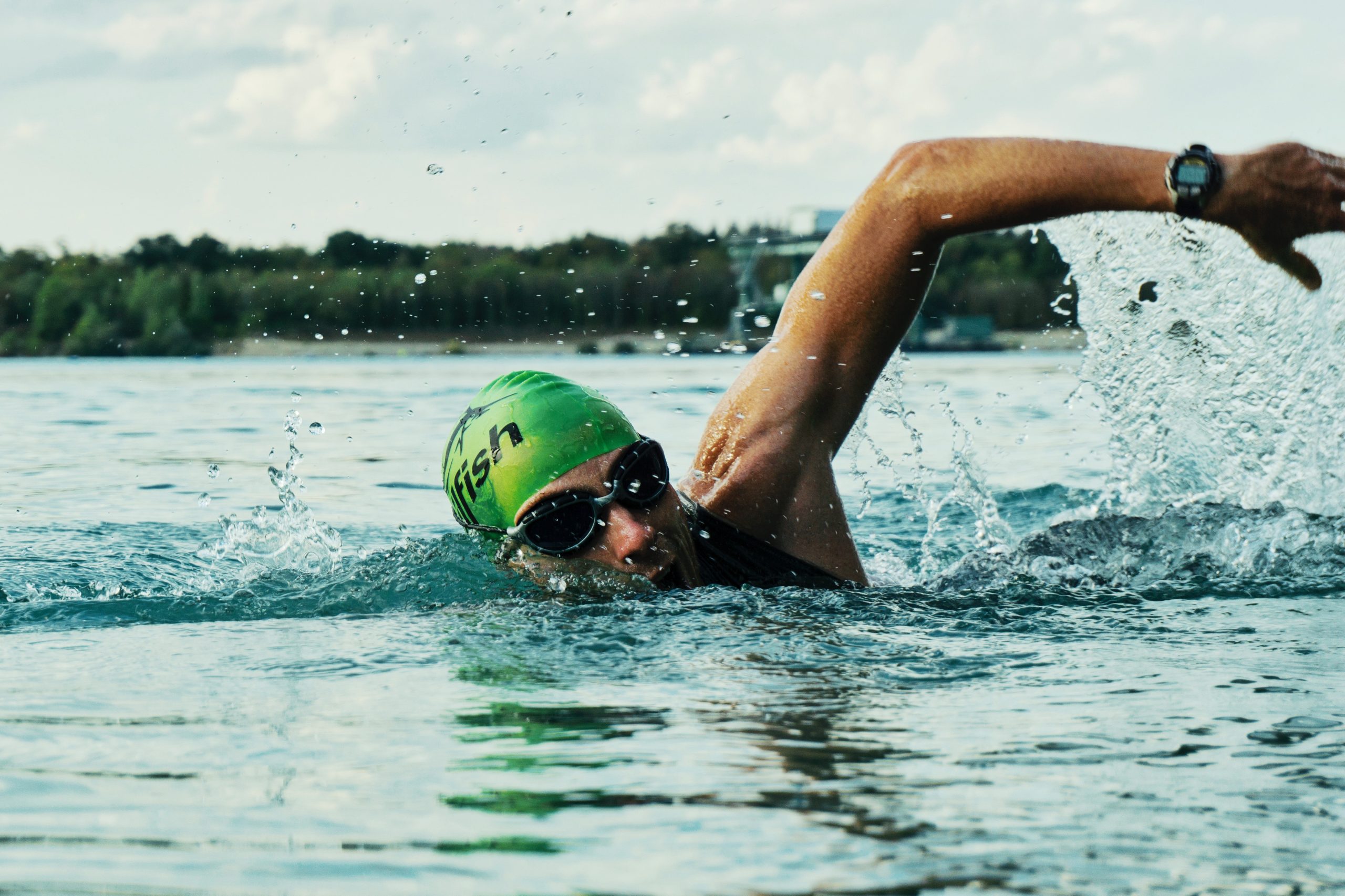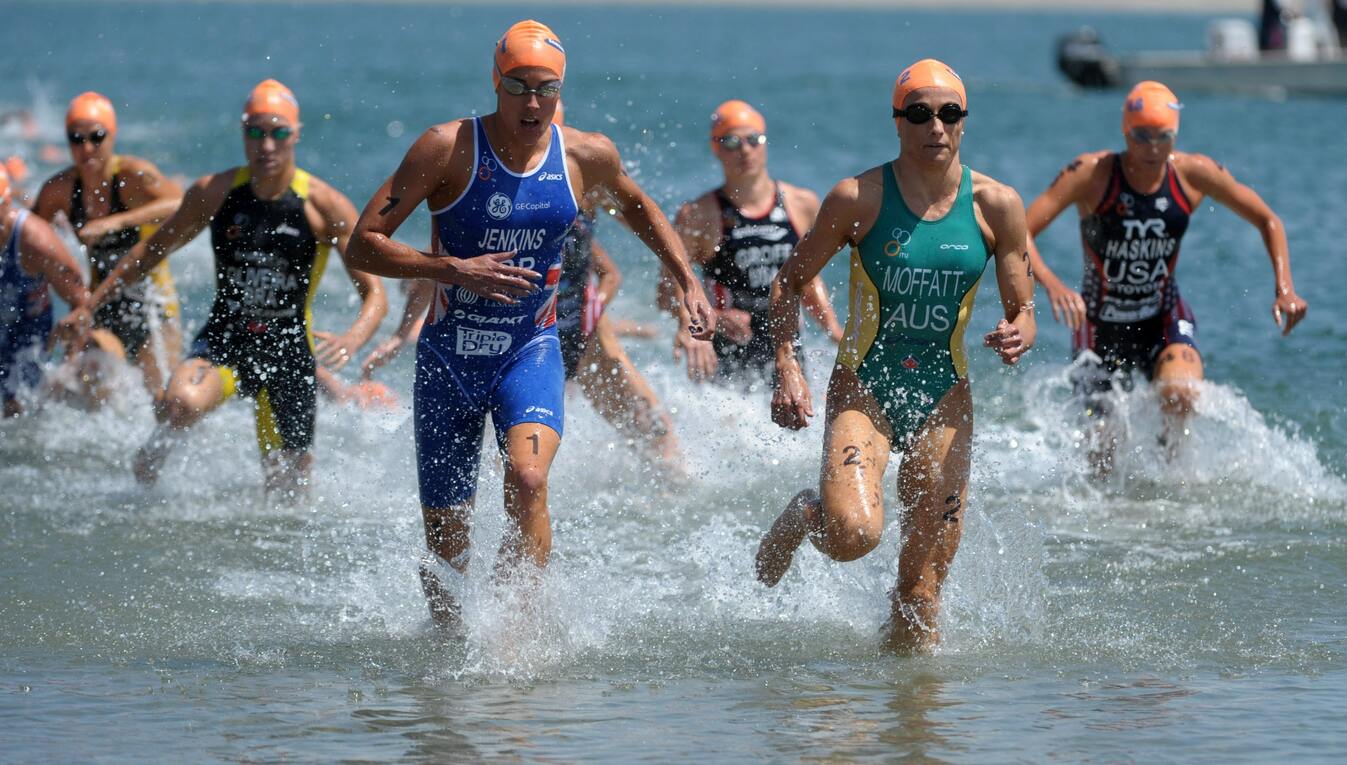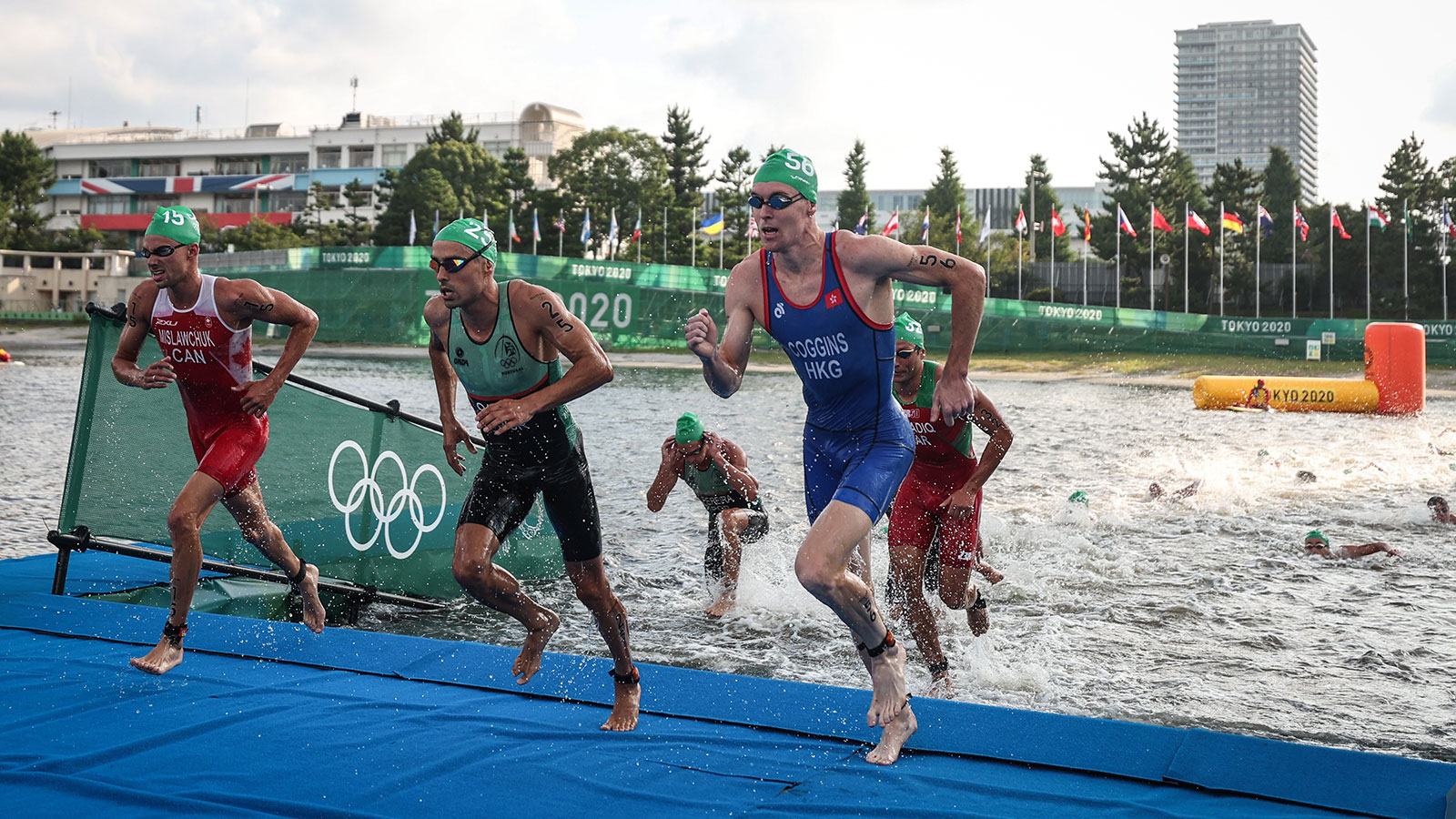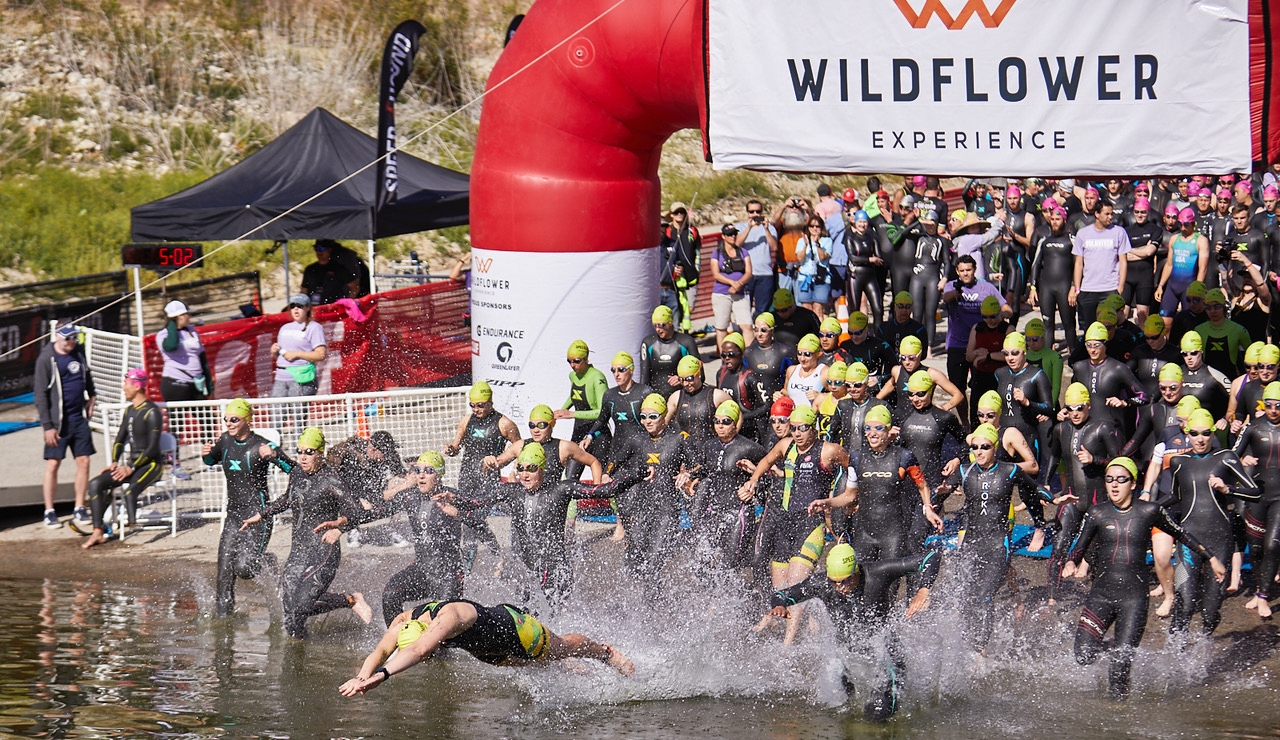Home>Misc>Featured>How Thick Can Your Wetsuit Be For A Triathlon
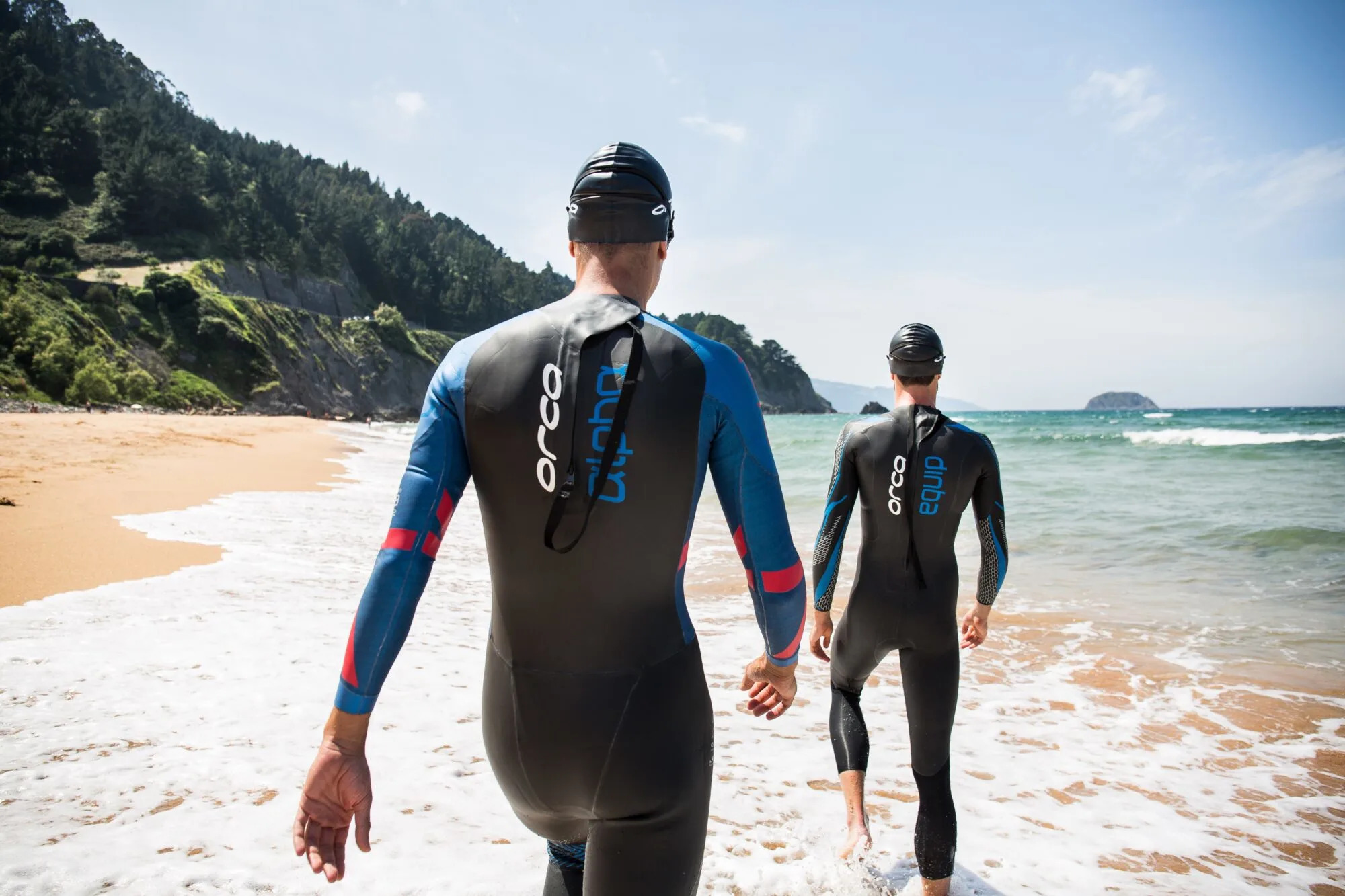

Featured
How Thick Can Your Wetsuit Be For A Triathlon
Modified: August 19, 2023
Find out the ideal thickness for your triathlon wetsuit in our featured guide, ensuring maximum performance and comfort.
Introduction
Triathlons are challenging and exhilarating multisport events that test an athlete’s physical endurance and mental fortitude. The combination of swimming, cycling, and running requires participants to be well-prepared, both mentally and physically. One essential piece of equipment that triathletes rely on is the wetsuit. Wetsuits offer several benefits, such as improved buoyancy, reduced drag, and enhanced insulation.
However, when it comes to choosing the right wetsuit for a triathlon, one crucial factor to consider is its thickness. The thickness of a wetsuit can significantly impact an athlete’s performance. While thicker wetsuits provide more insulation and buoyancy, thinner wetsuits offer increased flexibility and mobility. Striking the right balance between thermal protection and freedom of movement is essential.
Understanding the ideal wetsuit thickness for a triathlon requires careful consideration of various factors, including water temperature, personal comfort levels, and race regulations. This comprehensive guide will delve into the factors to consider when selecting wetsuit thickness, the advantages and disadvantages of both thick and thin wetsuits, and provide guidelines for choosing the right thickness for your triathlon.
Importance of Wetsuits in Triathlons
Wetsuits play a crucial role in triathlons, offering numerous benefits to athletes during the swim portion of the race. Here are some key reasons why wetsuits are considered essential equipment:
- Buoyancy: Wetsuits are designed to provide additional buoyancy by trapping a thin layer of water between the suit and the skin. This added buoyancy helps swimmers float higher in the water, reducing drag and promoting a more efficient swimming technique.
- Reduced Drag: The sleek and hydrodynamic design of wetsuits helps to minimize drag in the water. The neoprene material used in wetsuits offers a smooth outer surface, allowing swimmers to glide through the water with less resistance.
- Insulation: Wetsuits provide insulation by trapping a layer of water against the body, which can help regulate body temperature in colder water conditions. This helps to prevent hypothermia and allows athletes to perform at their best, even in chilly waters.
- Protection: Wetsuits offer protection from elements such as jellyfish stings, coral reef abrasions, and minor impacts, ensuring a safer swimming experience for triathletes.
- Confidence and Peace of Mind: Wearing a wetsuit can boost an athlete’s confidence during the swim leg of a triathlon. The added buoyancy, insulation, and protection can provide a sense of security and peace of mind, allowing athletes to focus on their performance and enjoy the race.
Overall, wetsuits are a vital piece of equipment that can greatly enhance a triathlete’s swimming performance and comfort in the water. By providing buoyancy, reducing drag, and offering insulation, wetsuits contribute to improved swim times and overall race experience. It is important for triathletes to understand the significance of a well-fitted wetsuit and its impact on their performance.
Factors to Consider for Wetsuit Thickness
When choosing the appropriate wetsuit thickness for a triathlon, several factors need to be taken into consideration to ensure optimal performance and comfort in the water. These factors include:
- Water Temperature: The water temperature is the most critical factor in determining the thickness of the wetsuit. The colder the water, the thicker the wetsuit should be to provide adequate insulation. Different temperature ranges may require different wetsuit thickness options.
- Personal Cold Tolerance: Each individual has a different tolerance to cold water. Some athletes naturally feel colder in the water than others. If you tend to feel colder, even in moderately cold water, you may opt for a slightly thicker wetsuit to ensure comfort and warmth during the race.
- Duration of the Swim Leg: The length of the swim leg in a triathlon is another factor to consider. For shorter swim distances, a slightly thinner wetsuit may be sufficient. However, for longer, endurance-based events, a thicker wetsuit can provide greater insulation throughout the swim.
- Regulations and Race Requirements: It is important to check the rules and regulations of the triathlon event. Some races may impose restrictions on wetsuit thickness based on water temperature or specific guidelines. Ensure that your chosen wetsuit complies with the race requirements.
- Mobility and Flexibility: While wetsuits provide insulation, thicker options can limit mobility and flexibility in the water. Consider your swimming style and preference for freedom of movement. If unrestricted movement is crucial to your swim technique, a thinner wetsuit may be more suitable.
By carefully evaluating these factors, you will be able to determine the appropriate wetsuit thickness that caters to your specific needs and the conditions of the triathlon. It is important to find the right balance between insulation, comfort, and flexibility to optimize your performance in the water.
The Role of Water Temperature
Water temperature is a crucial factor when it comes to selecting the right wetsuit thickness for a triathlon. The temperature of the water can greatly impact an athlete’s comfort and performance in the swim leg. Here’s a breakdown of how different water temperatures correspond to wetsuit thickness:
- Warm Water (above 24°C/75°F): In warmer water conditions, a full wetsuit may not be necessary, and some athletes may even opt for a sleeveless or “shorty” wetsuit. These wetsuits have thinner neoprene panels on the arms and legs, providing minimal insulation while still offering some buoyancy.
- Moderate Water (18-24°C/64-75°F): In water temperatures within this range, a full wetsuit with a thickness of around 3/2mm or 4/3mm is typically recommended. These wetsuits provide sufficient insulation to keep the body warm while still allowing for a good range of motion and flexibility.
- Cold Water (12-18°C/54-64°F): In colder water temperatures, a thicker wetsuit is necessary to provide adequate insulation. Wetsuits with a thickness of 4/3mm to 5/4/3mm are commonly used. These wetsuits offer improved thermal protection and help maintain body temperature during prolonged exposure to the cold water.
- Very Cold Water (below 12°C/54°F): In extremely cold water conditions, a wetsuit with a thickness of 5/4/3mm or even 6mm is recommended. These suits provide maximum insulation and keep the body warm in frigid temperatures.
It is important to note that these temperature guidelines are general recommendations and personal preferences may vary. Some athletes may have a higher tolerance for cold water and may opt for slightly thinner wetsuits, while others may prefer thicker suits for added warmth.
Remember, water temperature can fluctuate or vary from one location to another, so it’s essential to check the specific water temperature of your race venue and make adjustments accordingly. By considering the role of water temperature, you can select the appropriate wetsuit thickness to ensure comfort and optimal performance in the swim leg of your triathlon.
Different Wetsuit Thickness Options
When it comes to wetsuits, there are various thickness options available to cater to different water temperatures and individual preferences. Here are the common wetsuit thickness options you can choose from:
- 1mm to 2mm: Wetsuits with a thickness of 1mm to 2mm are suited for warm water conditions where insulation is not a primary concern. These thinner wetsuits offer minimal insulation and maximum flexibility, making them ideal for races in tropical or summer climates.
- 2mm to 3mm: Wetsuits in the 2mm to 3mm range are suitable for moderate water temperatures. They offer a good balance between flexibility and insulation and are often the go-to choice for triathlons in spring or fall seasons.
- 3mm to 4mm: Wetsuits with a thickness of 3mm to 4mm provide increased insulation and are ideal for colder water conditions. They offer better thermal protection, making them suitable for races in early spring or late fall when the water temperatures start to drop.
- 4mm to 5mm: These wetsuits are designed for cold water conditions and offer excellent thermal protection. With thicker neoprene panels, they provide enhanced insulation to keep the body warm and maintain performance in lower water temperatures.
- 5mm to 6mm: Wetsuits with a thickness of 5mm to 6mm are specifically designed for very cold water conditions. These suits offer maximum insulation, keeping the body warm even in extremely cold water temperatures.
It’s important to remember that the ideal wetsuit thickness may vary based not only on the water temperature but also on personal preferences, race duration, and individual cold tolerance. Experimenting with different thickness options during training sessions can help you determine the most suitable wetsuit thickness for your specific needs.
Ultimately, the purpose of a wetsuit is to strike a balance between staying warm, maintaining flexibility, and optimizing performance. By choosing the right wetsuit thickness option, you can ensure a comfortable and efficient swim leg in your triathlon.
Advantages and Disadvantages of Thick Wetsuits
Thick wetsuits, typically ranging from 4mm to 6mm in thickness, offer several advantages and disadvantages that triathletes should consider when choosing their swim gear. Let’s explore the benefits and drawbacks of opting for a thicker wetsuit:
- Advantages:
- Superior Insulation: Thick wetsuits provide excellent thermal protection, keeping the body warm in colder water temperatures. They trap a thicker layer of water against the skin, providing enhanced insulation against the external environment.
- Buoyancy and Stability: The added neoprene material in thick wetsuits increases buoyancy, allowing athletes to float higher in the water. This can improve swim positioning and stability, reducing drag and promoting a more efficient swimming stroke.
- Enhanced Durability: Thick wetsuits are generally more durable due to the extra layers of neoprene material used. This can make them more resistant to wear and tear, prolonging the lifespan of the wetsuit.
- Disadvantages:
- Reduced Flexibility: Thicker wetsuits can limit flexibility and range of motion compared to thinner options. This reduced flexibility can affect swim technique and mobility, potentially impacting overall performance.
- Heavier and Bulkier: The extra thickness and material in thick wetsuits can make them heavier and bulkier, which may feel less comfortable during the swim leg. This added weight can also affect swim speed and agility in the water.
- More Challenging Transitions: Thick wetsuits can be more challenging to remove quickly during transition periods between swim, bike, and run legs. This can add valuable seconds or even minutes to race times.
Ultimately, the decision to choose a thick wetsuit depends on the water temperature, personal preference, and individual swim style. If you prioritize thermal insulation and buoyancy over flexibility and ease of movement, a thicker wetsuit may be the right choice for you. However, it’s important to strike a balance between these factors to ensure comfort, optimal performance, and a smooth transition from the swim leg to the next stages of the triathlon.
Advantages and Disadvantages of Thin Wetsuits
Thin wetsuits, typically ranging from 1mm to 3mm in thickness, offer several advantages and disadvantages that triathletes should consider when selecting their swim gear. Let’s explore the benefits and drawbacks of opting for a thinner wetsuit:
- Advantages:
- Flexibility: Thin wetsuits provide excellent flexibility and freedom of movement, allowing athletes to swim with a wide range of motion. This flexibility can contribute to a more efficient swim stroke and improved performance.
- Lightweight and Less Bulk: Thin wetsuits are lightweight and less bulky compared to their thicker counterparts. This can provide a more comfortable experience during the swim leg and reduce fatigue over longer distances.
- Easy Removal: Thinner wetsuits are easier to remove during transition periods between swim, bike, and run legs. This can save valuable time during races and contribute to smoother transitions.
- Disadvantages:
- Reduced Insulation: Thin wetsuits offer less insulation compared to thicker options, which can be a disadvantage in colder water temperatures. Athletes may feel more exposed to the elements and prone to experiencing discomfort or even hypothermia.
- Limited Buoyancy: Thinner wetsuits provide less buoyancy compared to thicker wetsuits. While this may not be a significant concern for strong swimmers, it can impact swim positioning and stability for individuals who rely on additional buoyancy support.
- Less Durability: Due to their thinner neoprene material, thin wetsuits may be more prone to wear and tear over time. This may require more frequent replacements, adding to the overall cost of swim gear.
The decision to choose a thin wetsuit depends on factors such as water temperature, personal preference, and swim style. If you prioritize flexibility and freedom of movement over maximum insulation and buoyancy, a thinner wetsuit may be the right choice. However, it’s essential to consider the water temperature and ensure that adequate thermal protection is maintained to avoid discomfort and potential health risks. Striking the right balance between flexibility, insulation, and personal comfort will contribute to overall performance and enjoyment in the water during a triathlon.
Guidelines for Choosing the Right Wetsuit Thickness
Choosing the right wetsuit thickness for a triathlon is essential to ensure optimal performance and comfort in the water. Consider the following guidelines when selecting your wetsuit thickness:
- Water Temperature: Determine the average water temperature of the race location. Refer to temperature charts or consult with local experts to identify the suitable wetsuit thickness range.
- Personal Comfort: Take into account your personal tolerance to cold water. If you tend to feel colder, opt for a slightly thicker wetsuit to ensure warmth and comfort during the swim leg.
- Race Duration: Consider the duration of the swim leg. For shorter distances, you may prioritize flexibility and choose a thinner wetsuit. For longer distances, additional insulation provided by a thicker wetsuit may be beneficial.
- Race Regulations: Check the rules and regulations of the triathlon event to ensure compliance with any restrictions on wetsuit thickness based on water temperature or specific guidelines.
- Mobility and Flexibility: Evaluate your swim style and preference for flexibility. If freedom of movement is essential, consider opting for a thinner wetsuit that offers greater flexibility.
- Training Sessions: Test different wetsuit thickness options during training sessions to determine which provides the best combination of comfort, insulation, and mobility.
Keep in mind that these guidelines are not set in stone, and personal preferences may vary. It’s crucial to find the right balance between insulation, flexibility, and comfort to optimize your performance in the water. Additionally, consider seeking advice from experienced triathletes or consulting with professionals in swim gear stores to get personalized recommendations for your specific needs.
By carefully considering these guidelines and tailoring your choice of wetsuit thickness to the water temperature, race distance, and your personal preferences, you can ensure a comfortable and efficient swim leg during your triathlon.
Maintenance and Care of Wetsuits
Proper maintenance and care of your wetsuit are essential to prolong its lifespan and ensure optimal performance. Here are some guidelines to follow when it comes to maintaining and caring for your wetsuit:
- Rinsing: After each use, rinse your wetsuit with fresh water to remove salt, sand, and chlorine. This helps prevent damage to the neoprene material and keeps the wetsuit clean.
- Drying: Hang your wetsuit on a wide, padded hanger in a well-ventilated area away from direct sunlight. Avoid drying it indoors where excessive heat can cause damage. Ensure the wetsuit is completely dry before storing.
- Storage: Store your wetsuit in a cool, dry place away from direct sunlight and heat sources. Avoid folding or creasing the wetsuit as this can cause permanent damage to the neoprene material.
- Avoiding Sharp Objects: Be cautious when handling your wetsuit to avoid contact with sharp objects that can puncture or tear the neoprene. Remove any jewelry or sharp accessories before putting on or taking off the wetsuit.
- Wetsuit Repair: In the event of minor tears or punctures, use an appropriate wetsuit repair kit to mend the damage. Follow the manufacturer’s instructions carefully for the best results.
- Avoid Excessive Stretching: When putting on or taking off your wetsuit, avoid pulling or stretching it excessively. This can lead to neoprene degradation and a compromised fit over time.
- Proper Washing: Periodically wash your wetsuit with a mild, non-abrasive wetsuit cleaner to remove grime and bacteria. Follow the instructions provided by the manufacturer for best results.
- Avoiding Contact with Chemicals: Avoid contact with harsh chemicals, such as bleach and solvents, as they can damage the neoprene material. Additionally, avoid leaving your wetsuit in hot cars or other environments with high temperatures that can cause the material to melt or deform.
By following these maintenance and care guidelines, you can ensure that your wetsuit remains in good condition, extends its lifespan, and retains its performance characteristics over time. Remember, proper care and attention to your wetsuit will enhance your overall triathlon experience and keep you comfortable in the water.
Conclusion
Choosing the right wetsuit thickness for a triathlon is crucial to ensure comfort, performance, and safety in the water. Factors such as water temperature, personal comfort, race duration, and individual preferences all play a role in determining the optimal wetsuit thickness. Thick wetsuits offer enhanced insulation and buoyancy but may limit flexibility and add bulk. On the other hand, thin wetsuits provide flexibility and freedom of movement, but offer less insulation. Striking the right balance is essential.
By considering the water temperature and personal cold tolerance, athletes can select a wetsuit thickness that provides adequate thermal protection without compromising on mobility. Guidelines such as race regulations, swim style, and training sessions can further help in determining the most suitable wetsuit thickness.
Additionally, ensuring proper maintenance and care of your wetsuit is crucial to prolong its lifespan and maintain optimal performance. Rinsing, drying, storage, and avoiding contact with sharp objects and chemicals are important elements of wetsuit care.
Ultimately, by understanding the advantages and disadvantages of thick and thin wetsuits and following the guidelines for choosing the right wetsuit thickness, triathletes can make informed decisions that optimize their swim performance and overall race experience.
